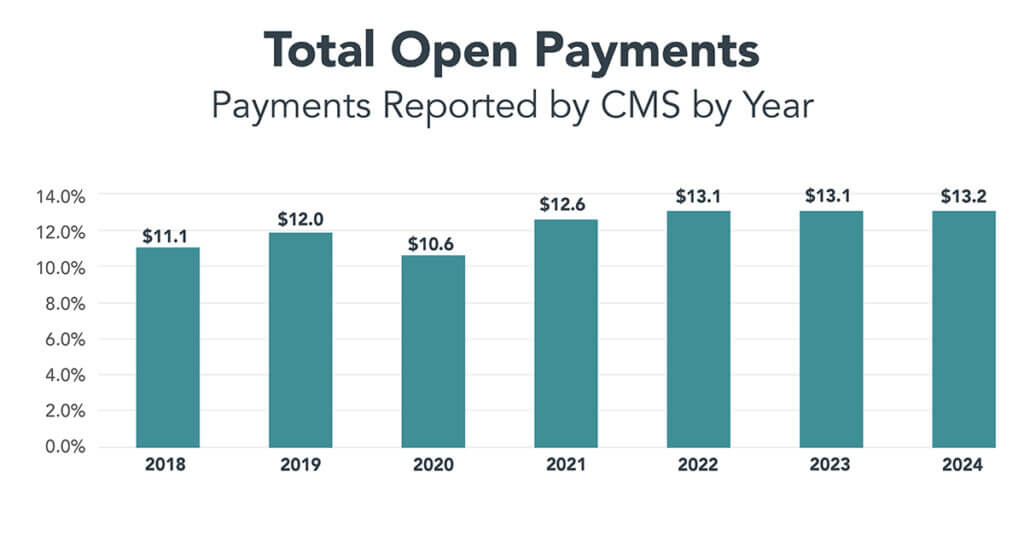July 16, 2025

Open Payments? More Like Open Pockets.
I’ve been writing a lot lately about how healthcare is impervious to change. Nothing you throw at this industry, including a deadly pandemic and two Trump administrations, will make it blink.
Here are some of my recent blog posts on healthcare being both an unstoppable force and an immovable object:
- Why National Health Expenditures Keep Rising
- A Lesson in Aligned Incentives
- The Healthcare Workforce Is Back. Was It Ever Gone? Will It Ever Go Away?
- The Unstoppable Force of Hospital Beds and Hospital Employment
Well, what’s one more example?
On June 30, the Centers for Medicare and Medicaid Services (CMS) released its latest annual figures on payments to providers from life sciences companies. CMS tracks and reports payments to providers from life sciences companies on its Open Payments website.
Providers are physicians, physician assistants, nurse practitioners, clinical nurse specialists, certified registered nurse anesthetists, certified nurse-midwives and teaching hospitals. Life sciences companies are medical device manufacturers, pharmaceutical companies and group purchasing organizations. Life sciences companies report payments to providers to CMS, which makes them public.
Payments include pretty much anything you can put a price tag on or could be considered remuneration, including research grants, compensation, contributions, consulting fees, honoraria, speaking fees, travel expenses, gifts, debt forgiveness, education, entertainment, food and beverages, loans and more.
All of that totaled about $13.2 billion in 2024, according to the June 30 data release by CMS. By my quick review of data on the Open Payments website, that’s a new record, at least over the past seven years. Here’s the data I pulled from the site in chart form:

Yes, total payments dipped in the first year of the pandemic. But they bobbed up to a new record in 2021 and haven’t looked back.
The data tells us three things.
- First, nothing, not even payment transparency on a publicly available website meant to shame parties in these transactions, slowed the upward climb of total payments.
- Second, life sciences companies continue to be willing to remunerate providers, and providers continue to be willing to accept remuneration.
- Third, it helps explain why things really never change in healthcare. It’s the healthcare industry complex personified and quantified. This is the status quo, and this is why the status quo is so hard to change.
When the customer revolution in healthcare happens, my guess would be those numbers would flatline then start to drop as consumers will be the ones everyone wants to court. Until then, let the billions of dollars keep flowing and let national health expenditure keep rising.
Thanks for reading.





